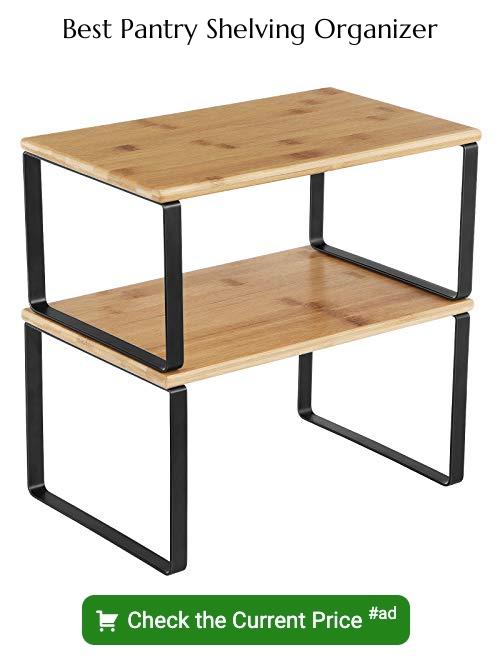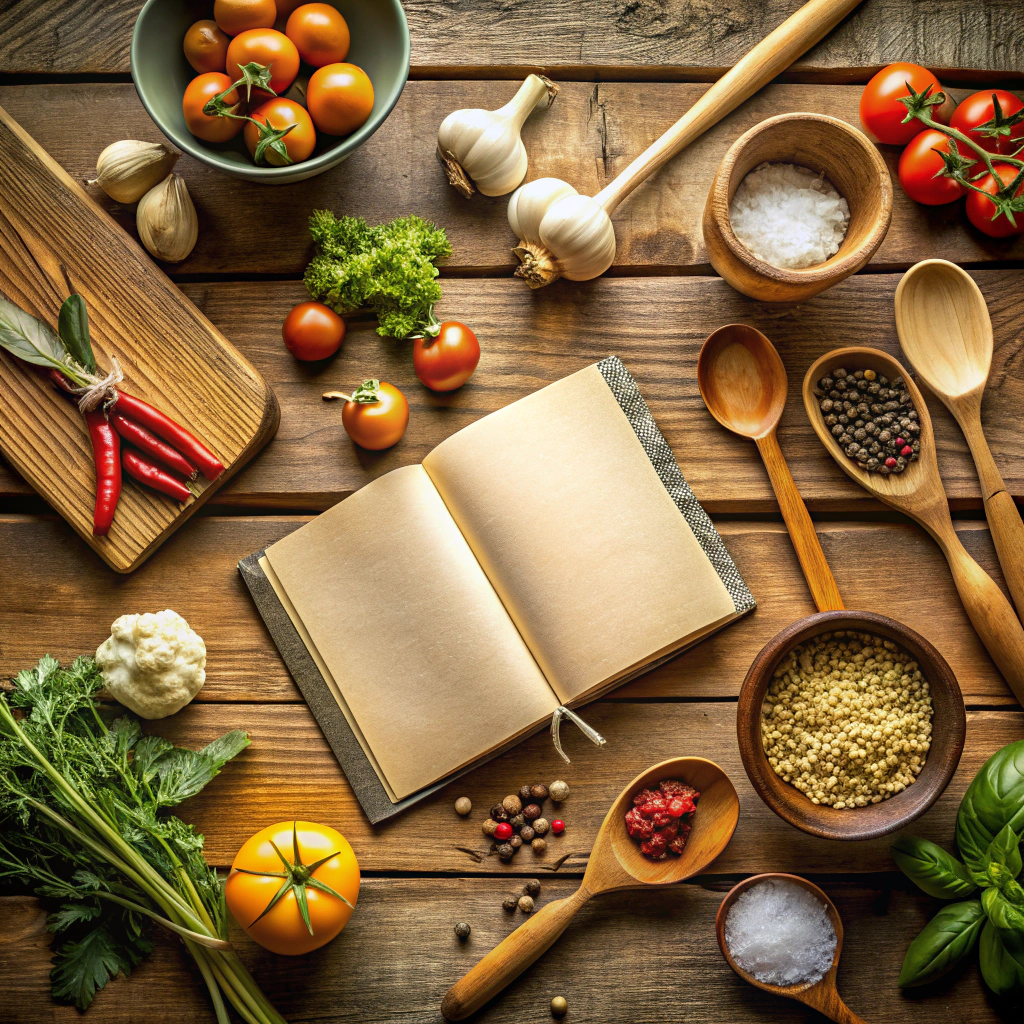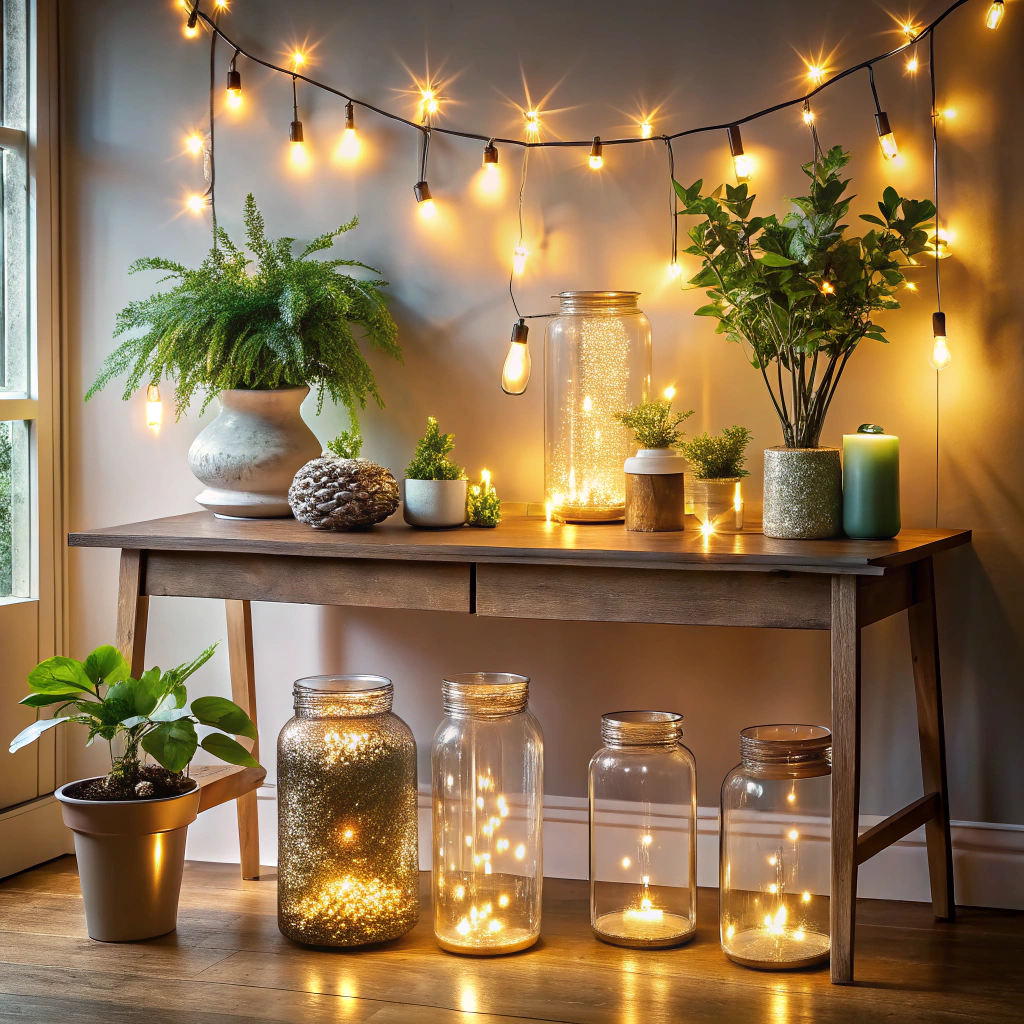Last updated on
Choosing the right walk-in pantry shelving can transform your kitchen into a functional and organized space, because it can maximize storage, streamline meal preparation and contribute to an attractive interior design.
Key takeaways:
- Wrap-Around Shelving System: Maximize corner spaces, use adjustable shelves.
- Pocket Door: Saves space, provides easy access, hides contents.
- Stand-Alone Wire Shelving: Versatile, movable, affordable, accessible.
- Cabinet Storage: Customizable, accessible, visible, versatile.
- Store Similar Items Together: Organize by category, group similar items.
Wrap-Around Shelving System
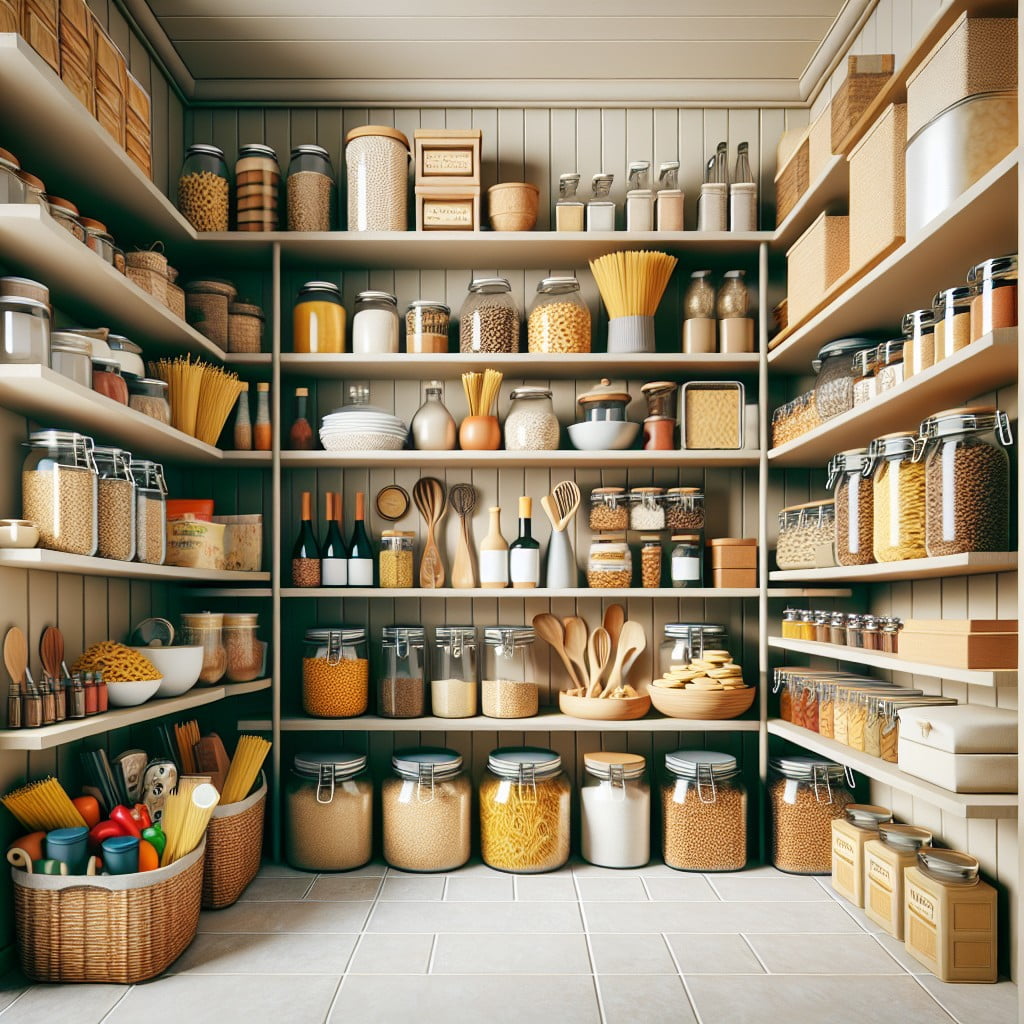
Maximizing corner spaces, a wrap-around shelving system ensures that every inch of your walk-in pantry is put to good use. By extending shelves along multiple walls, you create a continuous storage area that allows for a seamless visual flow and easy access to items. This is particularly effective in small pantries where efficient use of space is paramount.
To implement this system successfully, consider adjustable shelving to accommodate items of varying heights, from tall cereal boxes to small spice jars. Opt for sturdy materials that can withstand the weight of heavy items like canned goods and bulk staples. The uniformity of wrap-around shelves can also contribute to an organized aesthetic, making it simpler to maintain order and inventory at a glance.
Pocket Door
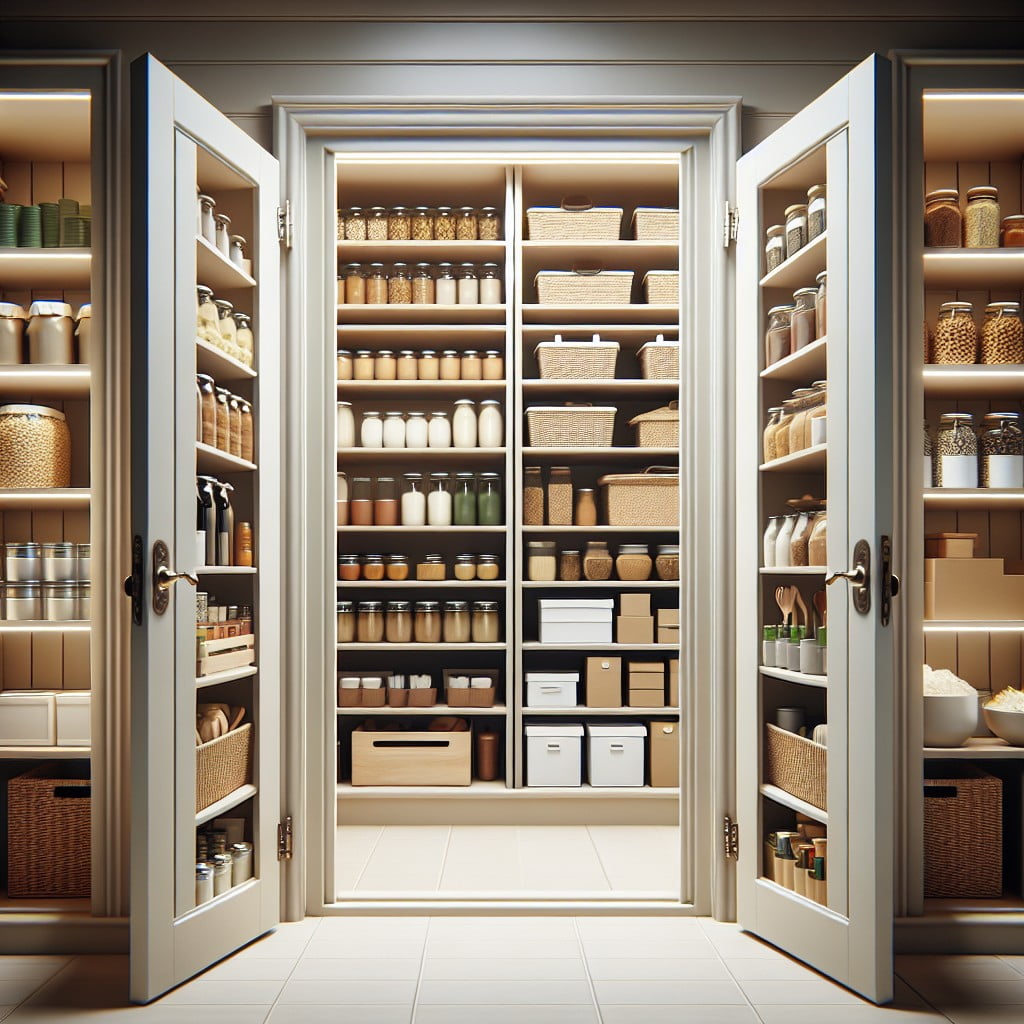
Integrating a pocket door into your walk-in pantry design offers several benefits:
1. Space Efficiency: It slides into the wall, eliminating the swing area needed for a traditional door and freeing up valuable floor space for additional shelving or storage within the pantry.
2. Accessibility: With a simple slide, access to your pantry shelves is unobstructed, making it easier to locate and retrieve items.
3. Aesthetic Appeal: A pocket door can offer a clean, streamlined look to your kitchen, and with a variety of styles available, it can enhance your home’s decor.
4. Concealment: It allows for a tidy kitchen by hiding the pantry’s contents, which is particularly useful if you want to keep a minimalist look or if your pantry gets disorganized.
5. Versatility: These doors can come with frosted glass, chalkboard, or wood finishes among others, offering custom solutions that can serve as message centers or match any interior design scheme.
Stand-Alone Wire Shelving
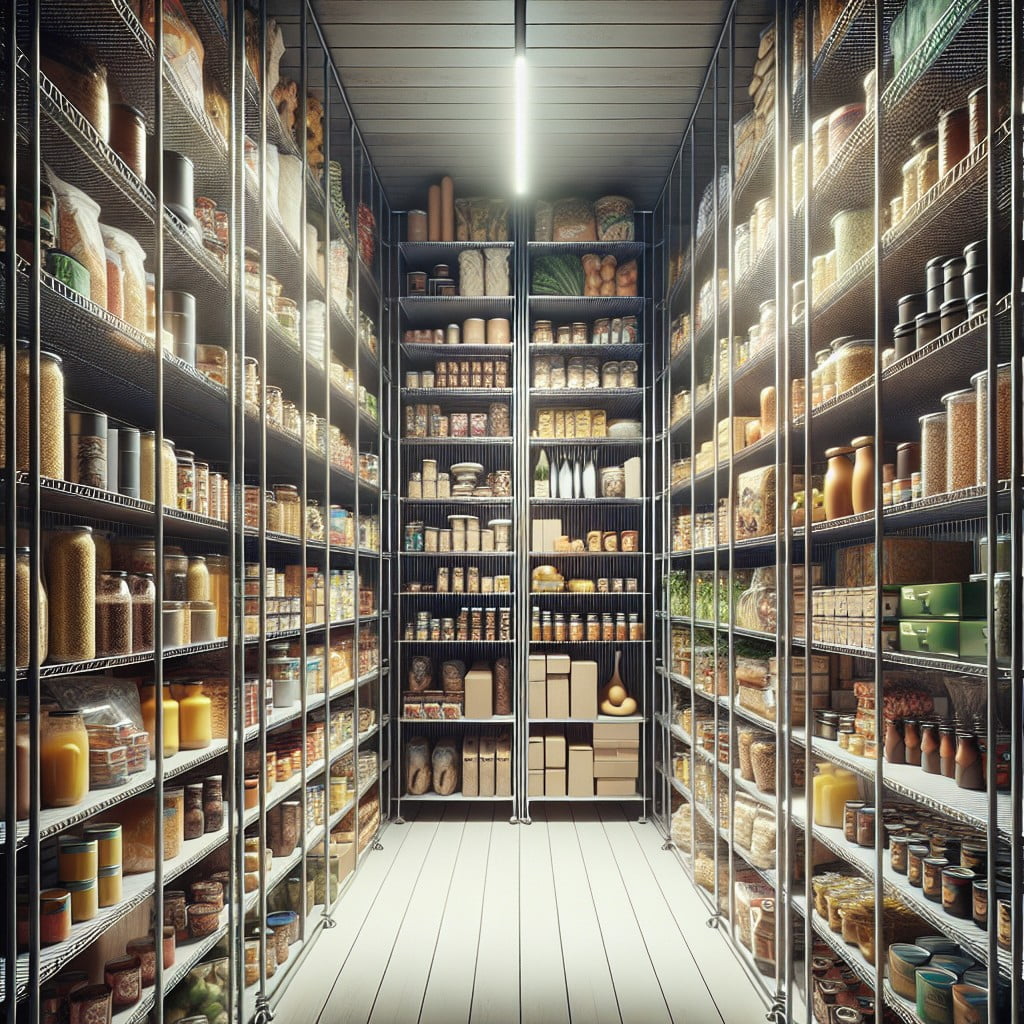
Stand-alone wire shelving offers a versatile solution for walk-in pantries. Its open-wire construction ensures visibility and air circulation, which is beneficial for storing perishables.
Assembling these units is straightforward, requiring minimal tools. They come in various heights and widths, accommodating spaces of all sizes. Adjustable shelves allow for the customization of spacing, accommodating tall or bulky items with ease.
Additional benefits include:
- Mobility: Many wire shelving units have wheels, making them easy to move for cleaning or reorganization.
- Durability: The metal construction is sturdy and can handle heavy loads, from canned goods to kitchen appliances.
- Accessibility: Open shelving keeps items within reach and view, preventing the out-of-sight, out-of-mind issue that can lead to waste.
- Cost-effectiveness: Compared to built-in cabinetry, these shelves are often more affordable and can be purchased at home improvement stores.
Cabinet Storage
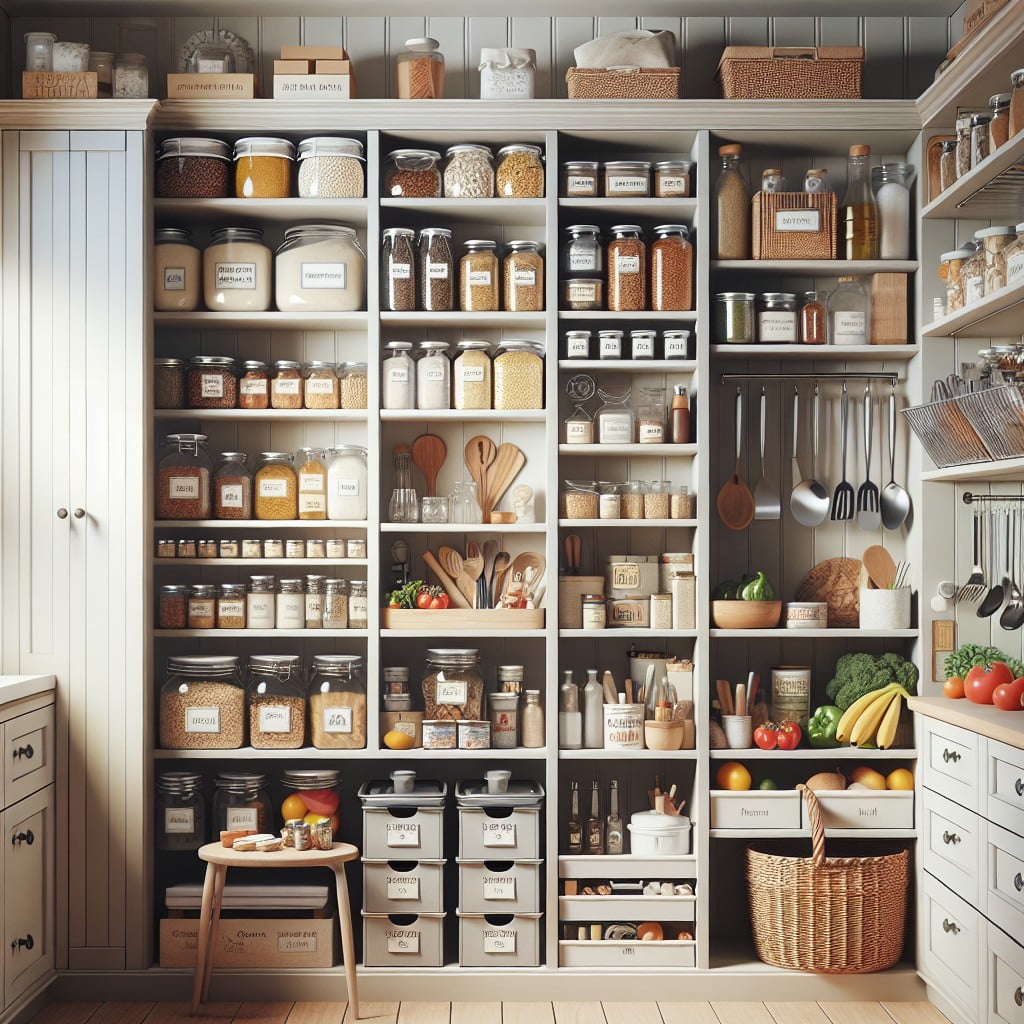
Cabinet storage offers an elegant way to keep pantry contents tidy and accessible. Unlike open shelving, the enclosed space helps protect items from dust and provides a uniform look that can seamlessly integrate into the overall design of your kitchen or pantry.
Customization: Tailor cabinet sizes to fit bulky appliances or awkwardly sized items, allowing for a more efficient use of space.
Accessibility: Incorporate pull-out drawers or lazy susans within cabinets for easy access to items at the back.
Visibility: Use glass-front doors on some cabinets to quickly identify contents while maintaining a clean aesthetic.
Adjustability: Opt for adjustable shelves to accommodate changing storage needs; easily modify the space as your pantry inventory fluctuates.
Versatility: Mix and match cabinet styles, combining drawers, shelves, and holders to suit various storage needs, from spices and baking ingredients to larger kitchen gadgets.
Employing these strategies can significantly enhance the functionality of your walk-in pantry by utilizing cabinet storage effectively.
Store Similar Items Together
Organizing items by category not only streamlines the search process but also provides a quick inventory check, preventing overbuying or wastage. Consider grouping canned goods together, arranged by type—vegetables, fruits, sauces, and soups.
Place baking ingredients in one zone, keeping flour, sugars, and decorative sprinkles side by side for easy access when whipping up a cake or cookies. For snack lovers, devote a shelf to chips, crackers, and nuts, making grab-and-go options readily available.
Regularly used items such as spices and oils should have a dedicated, reachable spot near the preparation area. Rotating stock is crucial; move older items to the front when restocking, ensuring nothing hides at the back past its expiration date.
Add Pantry Drawers
Incorporating drawers into your pantry design can streamline organization and accessibility. Unlike static shelves, drawers can be pulled out fully, providing a clear view and easy reach to items at the back.
Deep drawers are ideal for storing bulky items like bags of flour or sugar, while shallower ones are perfect for organizing spices and small containers.
Choose sturdy slides and durable construction to support the weight of heavier goods. Think about adjustable dividers within drawers; they can be customized according to your storage needs, ensuring every inch of space is utilized efficiently.
For added convenience, consider soft-close mechanisms that prevent drawer slamming and add a touch of luxury to your pantry.
Conceal Clutter
To maintain a streamlined look within your walk-in pantry and keep visual noise to a minimum, consider incorporating features that help conceal clutter. Baskets and bins are excellent for grouping loose items and snacks, keeping them out of sight while maintaining ease of access. Frosted or opaque containers can mask the disarray of small goods while clear labeling on the outside keeps things organized.
Sliding cabinet doors or fabric curtains provide an attractive way to cover shelves and are a budget-friendly solution to hide the less-than-pretty packaging. Utilize back-of-door storage for smaller items to free up shelf space and keep your walk-in pantry looking tidy and inviting.
With these strategies, it’s simple to create a serene and functional storage space that conceals the chaos of everyday pantry goods.
Label Items
Effective organization within a walk-in pantry hinges on the visibility and accessibility of items. Using labels serves several practical functions:
- Quick Identification: Clearly labeled containers aid in swiftly finding ingredients, saving time and reducing the need to rummage through shelves.
- Inventory Management: With everything labeled, you can easily keep track of what you have and what needs restocking.
- Consistency: Labels maintain a uniform look, contributing to the overall aesthetic and orderliness of the space.
- Versatility: Choose from handwritten labels, printed tags, or even chalkboard labels for reusability and flexibility when changing contents.
For durability and ease of cleaning, consider water-resistant labels, especially for containers that might be prone to spills or come into contact with damp hands.
Pantry Barn Door
Opting for a barn door elevates the aesthetic appeal while ensuring smart space utilization. This style slides along a track, eliminating the need for clearance required by traditional hinged doors and thus offering more flexibility in organizing interior shelving. It also becomes an instant focal point, lending a chic, rustic charm to your space.
Some key advantages include:
- Space efficiency: Ideal for tight spaces where swing-out doors are impractical, allowing for additional shelving right up to the pantry entrance.
- Accessibility: Slides easily to reveal the entire pantry, making it simple to find and reach items quickly.
- Customization: Available in various materials and designs, barn doors can be tailored to match your home’s decor.
- Easy installation: With the right tools, they can be a straightforward DIY project, avoiding the need for extensive renovations.
Incorporating a barn door into your walk-in pantry design can create an efficient and attractive element that complements your home’s style while enhancing usability.
Decanted Goods
Transferring items from their original packaging into clear, uniform containers helps streamline the look and functionality of your pantry. Decanting can preserve freshness, make it easier to see how much of an item you have left, and eliminate visual clutter from mismatched boxes and bags.
When decanting:
- Choose airtight containers to keep dry goods fresh longer.
- Opt for clear bins or jars to quickly identify contents and monitor supply levels.
- Allocate a space for labels to jot down expiration dates or cooking instructions.
- Select stackable shapes to maximize vertical space and keep shelves orderly.
- Consider the size and frequency of use to determine the appropriate container volume.
Maximize Shelving and Storage
To fully utilize the space in a walk-in pantry, it’s essential to design shelving that reaches from floor to ceiling, taking advantage of vertical space. Adjustable shelves offer flexibility to accommodate items of varying heights, from cereal boxes to spice jars.
Corners can be maximized with custom shelving solutions, ensuring no space is wasted. Deep shelves are perfect for storing bulky items at the back, while shallow ones are ideal for easy access to everyday essentials.
Including pull-out shelves and drawers can greatly improve the visibility and reachability of items stored at the back. Similarly, installing tiered shelving can make it easier to see and grab cans and jars. If the pantry is deep, rotating shelves or lazy Susans help in accessing items with ease.
Lastly, consider the strength and durability of materials; sturdy wood or metal shelving can support heavier loads, ensuring longevity and functionality.
Consider Layout
When planning shelving in a walk-in pantry, it’s essential to factor in both aesthetics and functionality. Position frequently used items at eye level for easy access, while lesser-used products can be stored higher up. Deep shelves are great for bulky appliances, but be sure to balance them with narrower shelves to prevent items from getting lost at the back.
Consider the flow of your kitchen, placing the pantry close enough for efficient meal prep but with enough space to avoid overcrowding. The inclusion of corner shelves can maximize storage in often under-utilized spaces. Remember to leave adequate clearance for any doors or walkways, ensuring a comfortable and practical pantry environment.
Install Task Lighting
Brightening your walk-in pantry with proper task lighting is vital to enhance functionality. Under-cabinet LED strips provide clear visibility on work surfaces without creating shadows.
Battery-operated puck lights can effortlessly illuminate individual shelves. If the ceiling allows, recessed downlights offer a sleek, flush finish while spotlighting general areas. For a touch of style, consider pendant lights which help define the space, especially if your pantry doubles as a butler’s pantry.
Ensure light placements align with the layout to avoid dark corners. Opt for bulbs with a color temperature that closely resembles natural daylight (around 5000K), as this renders colors accurately and helps in identifying the true shades of your food items.
Remember, the goal of task lighting is to provide focused light to areas where you most often read labels, sort groceries, or prepare food, making your time in the pantry efficient and pleasant.
Use Clear Containers
Transitioning to transparent containers offers several practical advantages for walk-in pantry organization. Firstly, they provide a quick visual inventory, allowing you to identify contents at a glance, which streamlines meal planning and grocery shopping. Additionally, uniform containers can enhance spatial efficiency by fitting together more seamlessly than a hodgepodge of original packaging. Another benefit lies in the preservation of freshness; many clear containers are airtight, protecting pantry staples from moisture and pests. When selecting your containers, opt for durable, BPA-free plastics or glass, and consider modular designs that stack easily. To further refine your system, use erasable labels to note the contents and expiration dates. Through these practices, you can achieve a functional and aesthetically pleasing pantry environment.
Maintenance Matters
To sustain the functionality and appearance of your pantry shelving, routine maintenance is key. Wipe down shelves monthly to prevent dust accumulation and pest attraction. Inspect for wear and tear, especially on movable parts like drawers or pocket doors, and repair as needed to avoid further damage. Additionally, routinely check expiration dates on stored goods to keep your inventory fresh and up-to-date. Establishing a regular cleaning and decluttering schedule ensures a well-kept and efficient walk-in pantry.
FAQ
How deep should shelves be in a walk-in pantry?
For efficient storage of daily use kitchen items, it is recommended that shelves in a walk-in pantry be a minimum of 12-14 inches deep, whereas for bulk or oversized items, a depth of 18+ inches might be more suitable.
What is the best shelving for a pantry?
The optimal shelving for a pantry combines the benefits of movable shelves, which maximize pantry efficiency by doubling or tripling usable space, with the visibility features of wire shelving and the timeless aesthetic appeal of wood.
What do builders use for pantry shelves?
Builders typically use 3/4 inches thick plywood for pantry shelves due to its strength and affordability, though they may opt for 1 1/4-inch plywood for added support.
What is the alternative to a walk-in pantry?
The practical substitute for a walk-in pantry is designating a section of your kitchen cabinets as pantry storage, which may involve minor reorganization of current items, but is feasible in virtually any kitchen setup.
How can one maximize the use of space in a walk-in pantry?
To maximize the use of space in a walk-in pantry, incorporate a variety of storage solutions like multi-purpose shelving, overhead racks, slide-out drawers, and door-attached canisters, while maintaining a systematic organization according to the frequency of use and expiration dates.
What are the best materials for pantry shelves in terms of durability and cost-efficiency?
The best materials for pantry shelves considering both durability and cost-efficiency are solid wood, medium-density fiberboard (MDF), and heavy-duty wire shelving.
Are there recommended lighting options for walk-in pantries that enhance visibility and accessibility?
Yes, recommended lighting options for walk-in pantries include LED strip lights, recessed lighting, and motion-sensor lights to enhance visibility and accessibility.
Recap:
